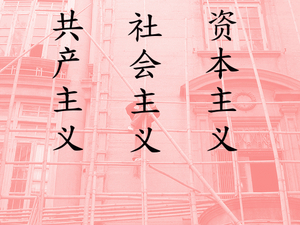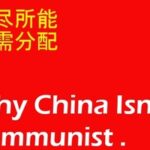The economic rise of China has focused increased foreign attention on the nature of China’s economy as well as the guiding ideology of the ruling Chinese Communist Party. China observers and critics often use the phrases “Red China,” “Communist China,” or “the Communist Chinese” to refer generally to various aspects of China, including its people, its government, and its economy.
This article goes beyond seeing all aspects of China as one-dimensional pieces belonging to a greater “Chinese Communist puzzle,” and instead goes a step further to analyze just if and “how communist” the Chinese economy actually is.
While the government of the People’s Republic of China is led by the Chinese Communist Party (CCP), since the late 1970’s the economic system under which China has operated is in actuality more similar to a mixed or socialist-market economy, with state-owned or state-backed enterprises competing with privately-owned enterprises in a market that is no longer controlled in its entirety by state mandates and central planning. Prices for most goods are set by the market, although some industries (e.g. natural resources, heavy industry, and banking) and products (e.g. health care services and medicine) still see significant intervention by local governments and/or the central government in Beijing.
While there are still a significant number of state-run companies (called SOEs, or State-Owned Enterprises) or state-backed entities (which are nominally private but receive preferential treatment from the government), most Chinese companies are now privately-owned, meaning the state does not own the means of production, as would be expected in a communist economy.
The CCP has transitioned from a revolutionary party which pursued a policy of class struggle to a ruling party which bases its legitimacy on economic growth and stability. As a result, the party understands that it needs to deliver economic growth and an increased standard of living to the population in order to maintain the faith of the people in the party’s mandate to rule. Having realized that central planning, with its vast misallocation of resources, would not lead to the economic prosperity seen in nations (such as Japan and America) and regions (such as Hong Kong) with market-based economies, in 1978 Deng Xiaoping started China along the path to market reforms which would gradually open various areas of the Chinese economy to domestic and foreign competition.
Deng viewed economics policies in terms of their practical outcomes, and so did not oppose introducing the useful elements of capitalism found in market-based economies. This “practical approach” to economics has been continued today, although the CCP still maintains that the economic system in China is “socialism with Chinese characteristics.”
That being said, it can be factually argued that the Chinese economy is not communist. Instead, modern China is a mixed-market or socialist-market economy, sharing many similarities (e.g. preferred loans or bailouts for selected companies or industries, and government intervention in markets to affect the price of the national currency and other commodities) with the economies in North America, Europe, and Japan.



